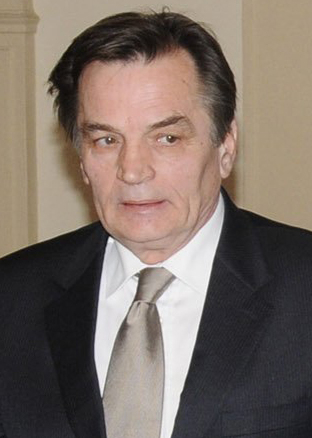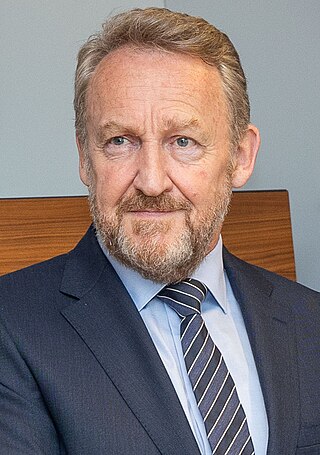The politics of Bosnia and Herzegovina are defined by a parliamentary, representative democratic framework, where the Chairman of the Council of Ministers of Bosnia and Herzegovina, named by the Presidency of Bosnia and Herzegovina, is the head of government. Executive power is exercised by the Council of Ministers of Bosnia and Herzegovina and the Presidency of Bosnia and Herzegovina. Legislative power is vested in both the Council of Ministers and the Parliamentary Assembly of Bosnia and Herzegovina. Members of the Parliamentary Assembly are chosen according to a proportional representation system. The judiciary is independent of the executive and the legislature.

The Armed Forces of Bosnia and Herzegovina is the official military force of Bosnia and Herzegovina. The BiH armed forces were officially unified in 2005 and are composed of two founding armies: the Bosniak and Bosnian Croat Army of the Federation of Bosnia and Herzegovina (VFBiH) and the Bosnian Serbs' Army of Republika Srpska (VRS).

The General Framework Agreement for Peace in Bosnia and Herzegovina, also known as the Dayton Agreement or the Dayton Accords, and colloquially known as the Dayton in ex-Yugoslav parlance, is the peace agreement reached at Wright-Patterson Air Force Base near Dayton, Ohio, United States, finalised on 21 November 1995, and formally signed in Paris, on 14 December 1995. These accords put an end to the three-and-a-half-year-long Bosnian War, which was part of the much larger Yugoslav Wars.

Alija Izetbegović was a Bosnian politician, Islamic philosopher and author, who in 1992 became the first president of the Presidency of the newly independent Republic of Bosnia and Herzegovina. He later served as the first chairman of the Presidency of Bosnia and Herzegovina.

The Federation of Bosnia and Herzegovina is one of the two entities composing Bosnia and Herzegovina, the other being Republika Srpska. The Federation of Bosnia and Herzegovina consists of ten autonomous cantons with their own governments and legislatures.
The Council of Ministers of Bosnia and Herzegovina, often called Government of Bosnia and Herzegovina, is the executive branch of the government of Bosnia and Herzegovina. It is also called the Cabinet.

The chairman of the Presidency of Bosnia and Herzegovina is the presiding member of the Presidency of Bosnia and Herzegovina, which collectively serves as head of state of Bosnia and Herzegovina.

The Socialist Republic of Bosnia and Herzegovina, commonly referred to as Socialist Bosnia or simply Bosnia, was one of the six constituent federal states forming the Socialist Federal Republic of Yugoslavia. It was a predecessor of the modern-day Bosnia and Herzegovina, existing between 1945 and 1992, under a number of different formal names, including Democratic Bosnia and Herzegovina (1943–1946) and People's Republic of Bosnia and Herzegovina (1946–1963).

Haris Silajdžić is a Bosnian politician and academic who served as the 5th Bosniak member of the Presidency of Bosnia and Herzegovina from 2006 to 2010. He was the Prime Minister of the Republic of Bosnia and Herzegovina from 1993 to 1996.

General elections were held in Bosnia and Herzegovina on 1 October 2006. They decided the makeup of Bosnia and Herzegovina's Presidency as well as national, entity, and cantonal governments.

Željko Komšić is a Bosnian Croat politician serving as the 6th and current Croat member of the Presidency of Bosnia and Herzegovina since 2018. Previously, he was a member of the national House of Representatives from 2014 to 2018.

The Croats of Bosnia and Herzegovina, often referred to as Bosnian Croats or Herzegovinian Croats, are native to Bosnia and Herzegovina and constitute the third most populous ethnic group, after Bosniaks and Serbs. They are also one of the constitutive nations of Bosnia and Herzegovina. Croats of Bosnia and Herzegovina have made significant contributions to the culture of Bosnia and Herzegovina. Most Croats declare themselves Catholics and speakers of the Croatian language.

The Constitutional Court of Bosnia and Herzegovina is the interpreter and guardian of the Constitution of Bosnia and Herzegovina. It has the appellate jurisdiction over issues arising out of judgments of any other court in the country, including the constitutional courts of the two entities and the Court of Bosnia and Herzegovina.
The Constitution of Bosnia and Herzegovina is the highest legal document of Bosnia and Herzegovina. The current Constitution is the Annex 4 of The General Framework Agreement for Peace in Bosnia and Herzegovina, also known as the Dayton Agreement, signed on 14 December 1995. The Constitution saw the end of war in Bosnia and Herzegovina, however it has seen a large amount of criticism. Under the supervision of international community, an "arrangement of amendments" to the Constitution, agreed upon by leading political parties, was proposed for adoption in the Parliamentary Assembly of Bosnia and Herzegovina in April 2006, but it failed to get the approval of two-thirds of members in the House of Representatives.

Bakir Izetbegović is a Bosnian politician who served as the 6th Bosniak member of the Presidency of Bosnia and Herzegovina from 2010 to 2018. He is the current president of the Party of Democratic Action (SDA).

General elections were held in Bosnia and Herzegovina on 3 October 2010. They decided the makeup of Bosnia and Herzegovina's Presidency as well as national, entity, and cantonal governments.
Following the general election on 3 October 2010, a process of formation of Bosnia and Herzegovina's Council of Ministers had begun. The resulting election produced a fragmented political landscape without a coalition of a parliamentary majority more than a year after the election. The centre-left Social Democratic Party, the largest party in the Federation of Bosnia and Herzegovina, and the Bosnian Serb autonomist Alliance of Independent Social Democrats, the largest party in Republika Srpska, each had 8 MPs of the total 42 MPs of the House of Representatives. Similarly, a crisis of government was also present at the local levels, as well as the Federal entity.

The Croat federal unit, Croat entity, or third entity, is a proposed federative unit in Bosnia and Herzegovina encompassing areas populated by Croats, to be created by the partition of the Federation of Bosnia and Herzegovina into Croat and Bosniak entities. The proposal is supported by the Croatian National Assembly, which includes the electoral representatives of Bosnian Croats. However, a detailed plan for its partition, including its borders, has yet to be finalized.

General elections were held in Bosnia and Herzegovina on 2 October 2022. They decided the makeup of the presidency as well as national, entity and cantonal governments.























